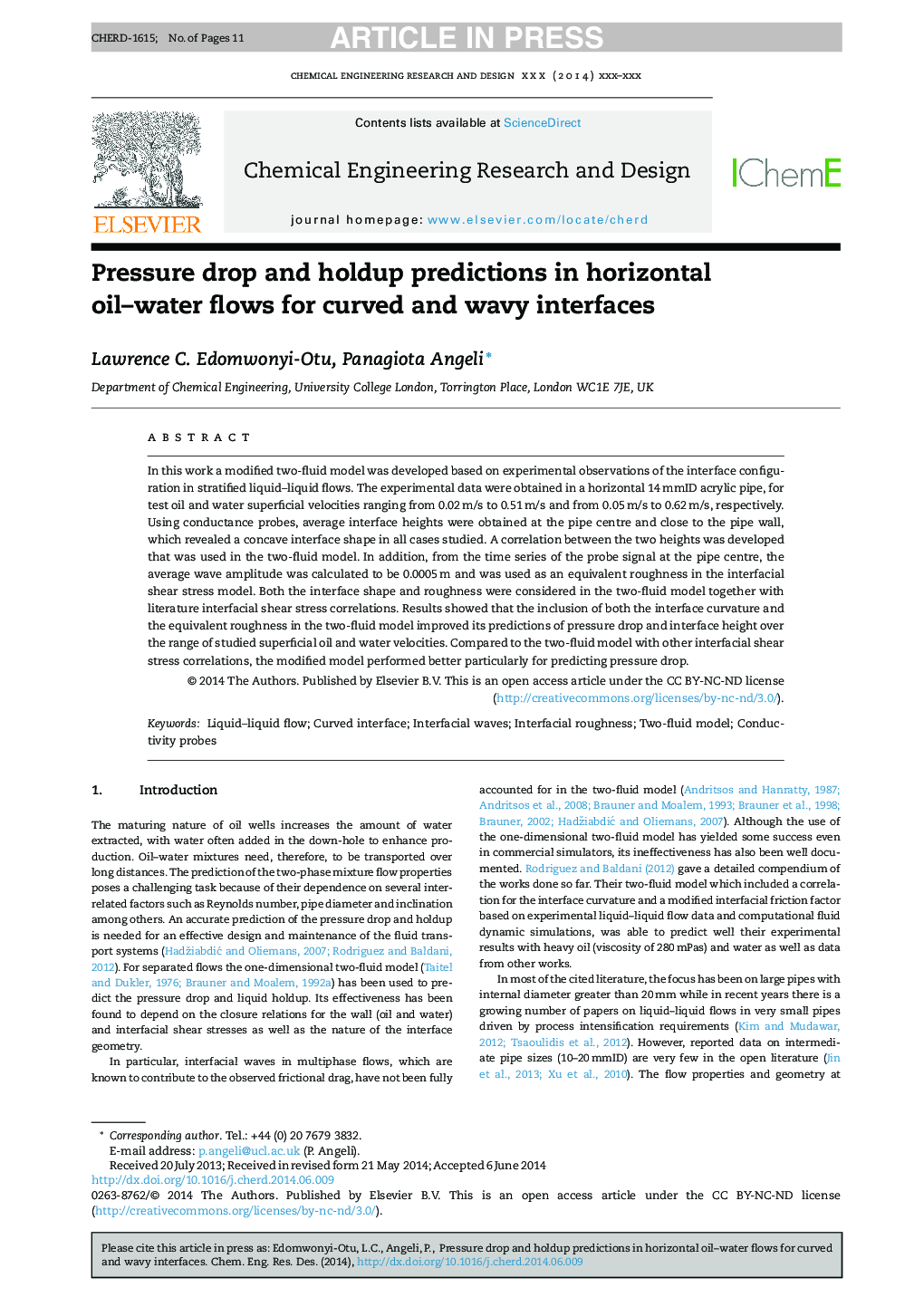| Article ID | Journal | Published Year | Pages | File Type |
|---|---|---|---|---|
| 7007433 | Chemical Engineering Research and Design | 2015 | 11 Pages |
Abstract
In this work a modified two-fluid model was developed based on experimental observations of the interface configuration in stratified liquid-liquid flows. The experimental data were obtained in a horizontal 14Â mmID acrylic pipe, for test oil and water superficial velocities ranging from 0.02Â m/s to 0.51Â m/s and from 0.05Â m/s to 0.62Â m/s, respectively. Using conductance probes, average interface heights were obtained at the pipe centre and close to the pipe wall, which revealed a concave interface shape in all cases studied. A correlation between the two heights was developed that was used in the two-fluid model. In addition, from the time series of the probe signal at the pipe centre, the average wave amplitude was calculated to be 0.0005Â m and was used as an equivalent roughness in the interfacial shear stress model. Both the interface shape and roughness were considered in the two-fluid model together with literature interfacial shear stress correlations. Results showed that the inclusion of both the interface curvature and the equivalent roughness in the two-fluid model improved its predictions of pressure drop and interface height over the range of studied superficial oil and water velocities. Compared to the two-fluid model with other interfacial shear stress correlations, the modified model performed better particularly for predicting pressure drop.
Related Topics
Physical Sciences and Engineering
Chemical Engineering
Filtration and Separation
Authors
Lawrence C. Edomwonyi-Otu, Panagiota Angeli,
